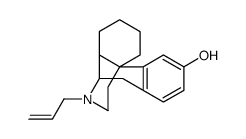Monitoring of the Zeta Potential of Human Cells upon Reduction in Their Viability and Interaction with Polymers.
O V Bondar, D V Saifullina, I I Shakhmaeva, I I Mavlyutova, T I Abdullin
Index: Acta Naturae 4 , 78-81, (2012)
Full Text: HTML
Abstract
The dynamic light scattering (DLS) technique was applied in order to assess the zeta potential of the plasma membrane of human cells. At pH 7.4, the cell zeta potential for different types of cells showed variations over a wide range and was equal to -19.4 ± 0.8 mV for HeLa cells and -31.8 ± 1.1 mV for erythrocytes. The difference could presumably be attributed to the differences in the biochemical composition of the cell plasma membrane. As a result of the heating of HeLa cells, the zeta potential shifted towards more negative voltages by 4.2 mV. An increase in the zeta potential correlated with an increase in the content of phosphatidylserine on the cell surface, which is considered to be an early marker of apoptosis. The DLS technique was also used to study the interactions between the cells and membranotropic polymers, such as polycations and nonionogenic Pluronic L121.
Related Compounds
| Structure | Name/CAS No. | Molecular Formula | Articles |
|---|---|---|---|
 |
levallorphan hydrogen tartrate
CAS:71-82-9 |
C19H25NO |
|
The mu opioid irreversible antagonist beta-funaltrexamine di...
1998-11-01 [Psychopharmacology 140 , 20, (1998)] |
|
mu-Opioid receptor-stimulated guanosine-5'-O-(gamma-thio)-tr...
1997-01-01 [Mol. Pharmacol. 51 , 87-96, (1997)] |
|
Delta opioid modulation of the binding of guanosine-5'-O-(3-...
1997-12-01 [J. Pharmacol. Exp. Ther. 283 , 1276, (1997)] |
|
Regulation of epithelial cell morphology and functions appro...
2012-01-01 [PLoS ONE 7(4) , e36110, (2012)] |
|
A one-step electrospray-based technique for modulating morph...
2012-01-01 [Int. J. Nanomedicine 7 , 5129-36, (2012)] |